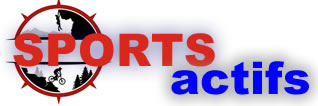 Whatever board sport you prefer to practice, the equipment is of course of considerable importance and, depending on your level, it can also have an influence on performance. This is why it is essential to choose the appropriate sliding equipment, which will allow you to make the most of your sporting activity, while guaranteeing you maximum safety. Having confidence in your equipment also allows you to progress more quickly. Knowing skis or snowboards well can therefore be essential to avoid disappointment, or simply to invest in sliding equipment that does not suit you.
Whatever board sport you prefer to practice, the equipment is of course of considerable importance and, depending on your level, it can also have an influence on performance. This is why it is essential to choose the appropriate sliding equipment, which will allow you to make the most of your sporting activity, while guaranteeing you maximum safety. Having confidence in your equipment also allows you to progress more quickly. Knowing skis or snowboards well can therefore be essential to avoid disappointment, or simply to invest in sliding equipment that does not suit you.
For skis, the multiple possibilities in terms of disciplines (downhill skiing, cross-country skiing, off-piste, freestyle, etc.) mean that there are several different and very specific types of skis, which are absolutely not interchangeable. Thus, for the track, parabolic skis are particularly suitable: their ends are wider and they benefit from a narrower size at the level of the bindings, a feature which makes it possible to reduce slippage and better negotiate turns.
Freeride skis, very versatile, will allow you to be comfortable off-piste. For those who like to do tricks and try their hand at some acrobatics, freestyle skis curved at the front and at the back are ideal. Beginners will opt for snowblades: skis much shorter than traditional skis, allowing them to have fun while familiarizing themselves with the movements of the discipline. Cross-country skis are long and thin, and allow you to ski on flat ground, even in light snow, as for touring skis, they are lighter than alpine skis, while being longer and wider for
better endurance comfort, and benefit from specific bindings. We will decide on the size of the skis according to their level but taking into account the discipline that we want to practice. A simple rule: the shorter the skis, the more manoeuvrable they are, but the less stable they are. On the other hand, the longer they are, the better the stability and the speed, but the more difficult it will be to negotiate the turns. Flexibility too benefits from a simple rule: the more flexible the skis, the more manoeuvrable they are, but stiffer skis will offer better performance to those who know how to master them.
Snowboards are grouped under four main categories: the narrow carving or alpine snowboard is a board whose shape is reminiscent of a ski and should be reserved for the piste. It has good stability and allows you to chain turns with a certain ease. The freestyle board is wide and short, with symmetrical and curved ends, which allow you to jump in any direction: it is the board for those who love tricks. The freeride board is the versatile snowboard par excellence, and therefore the one that the beginner will choose. Finally, the swallow board is made for powder snow only.
A flexible board is easier to control to begin with, but it quickly becomes unstable at higher speeds, but rigid boards are less maneuverable. So neophytes will opt for a flexible snowboard, while experienced riders can afford more rigid boards in order to gain speed.




